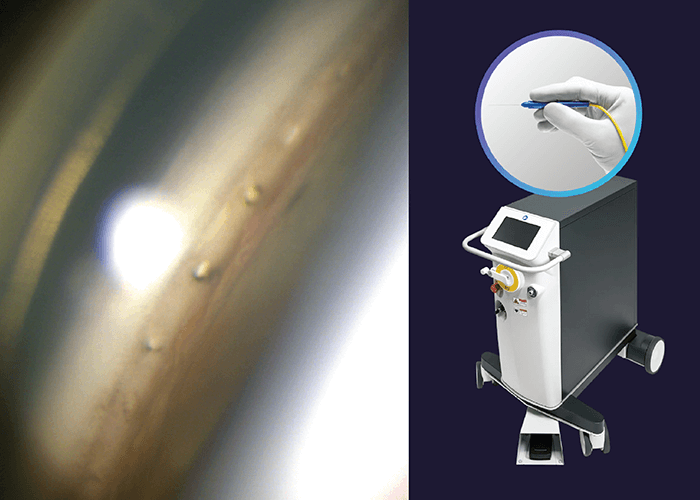
Please tell us about your recent adoption of ELIOS...
One of the recurring motifs in our office is our love of lasers. We’ve used lasers for decades, which made the adoption of ELIOS natural. In my opinion, ELIOS is the most adoptable trabecular bypass procedure, so it’s not only for glaucoma specialists but also anterior segment surgeons who are experienced with gonioscope guided angle surgery and trabecular meshwork anatomy. There are important differences between the excimer lasers used in refractive surgery, which use much shorter wavelengths of light, and ELIOS, which uses an excimer laser with a wavelength of 308 nm. Specifically, the ELIOS excimer laser gives us the ability to transport laser energy to the trabecular meshwork through an optical fiber in a specially designed probe, which results in an excellent safety profile. Why? Because such precise excimer ablation of trabecular meshwork tissues causes no collateral damage to the cornea or the iris.
Meet Karsten Klabe
My name is Dr Karsten Klabe and I’ve been working in a private practice for seven years. I was formerly the head of the eye department for ten years at the Marien Hospital in Düsseldorf, Germany. I’ve been working as a glaucoma specialist for around 20 years – and, as far as I know, I ́m one of the earliest adopters of MIGS in the area of North Rhine-Westphalia. After all this time, I’m still interested in introducing new surgical approaches in the field of glaucoma
For which patients is ELIOS suitable?
All that’s required for ELIOS is an open angle. The procedure is independent of pigment in the trabecular meshwork compared with ALT/SLT. Additionally, it’s not only suited to combined cases, and can be performed standalone. I use it on any patient where the target pressure is no lower than 14 mmHg. We know that the percentage of IOP lowering is between 20–40 percent – suitable for around half of my patients. My preference for ELIOS is patients with one or two medications pre-op, and pressure no higher than 30 mmHg; these patients have a very good chance of being medication free post-surgery. Previous SLT is not a contraindication, as the mechanism of action is completely different, meaning the microchannels can still be created using the ELIOS excimer laser.
What should a referring doctor know about ELIOS?
It’s a safe and effective procedure and in general, the post-op of ELIOS is comparable to cataract surgery – you see an immediate effect following surgery.
References
- Berlin MS, Shakibkhou J, Tilakaratna N, Giers U, Groth SL. J Cataract Refract Surg. 2022 Jul.
